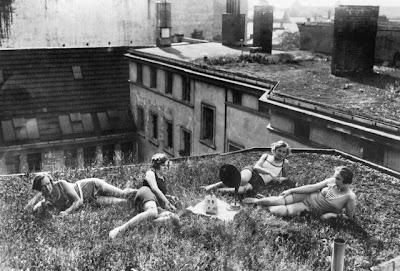
Despite the complaints I leveled in my last post, riding a bike in Chicago is mostly not so bad. There are the maniac cabbies, the summer humidity, the winter ice, but 95% of the time it's a breeze. But every cyclist has their own personal donnybrooks...those spots where all rules of the road go out the window in a quest for survival. The route I follow from home to downtown and back again uses Milwaukee Avenue, possibly the most heavily trafficked street by Chicago cyclists, and as good a candidate for a cycle superhighway as ever there was one. Just because it's the street of choice connecting downtown with points northwest doesn't mean it's always optimal, however. I give you the top seven worst cycling locations from my commute.
1. Milwaukee & Kinzie/Desplaines
Let's start at the end of the line, where Milwaukee ends and feeds you onto Kinzie and into River North & the Loop.
View Larger Map
This is by far my least favorite intersection. Car traffic is generally heavy, especially during rush hour, and getting across to the turn lane is sometimes nearly impossible. The left turn signal cycle is exceptionally short for such a broad intersection, only enough time for one bike to make it across legally. Unsurprisingly, the bicycle crash density in this location is quite high.
Solution: Bike box for left turns and Amsterdam-style traffic signals giving priority to turning bikes.
2. Milwaukee & Elston
View Larger Map
What happens when two diagonals meet? My problem here is on the northwest-bound side of Milwaukee as you approach Elston. The lane for cars turning onto Elston is very short and cars must often cross the bike lane at the last minute to merge. Once again we see a high density of crashes.
Solution: Disallow street parking on the north side of Milwaukee between Chicago & Elston to give drivers more space to change lanes.
3. Milwaukee & Wood/Wolcott
View Larger Map
This intersection is a mess for so many reasons. The odd angle and the placement of the traffic lights make for confusion on the part of many drivers, cyclists & pedestrians, and once again, a high density of crashes.
Solution: I like what Norsman Architects has proposed, bulb-outs to slow traffic and a realignment of Wood & Wolcott so they meet one another head on. (Incidentally, this is also the location of the Walgreens store which I have discussed in previous posts.)
4. Milwaukee between Wood & North
View Larger Map
Just beyond that intersection things get pretty dicey during rush hour. The street narrows slightly cutting the amount of clearance for bikes. Automotive traffic is usually backed up quite some distance and cars are parked all along the right side, making it feel like riding through a canyon. Parked cars are constantly swinging open doors and jaywalkers dart out from between them. Bike traffic also usually gets bottlenecked in this stretch. To make matters worse, delivery vehicles often double-park in the bike lane.
Solution: Dare I say it? Eliminate parking and install a separated bike lane.
5. Milwaukee & Western
View Larger Map
Not such a bad intersection really, except for the entrance to the McDonald's parking lot on Milwaukee. Drivers come in and out with no regard to the bike lane or pedestrians on the sidewalk, and honestly I can't see any good reason to have a parking entrance so close to a major intersection.
6. Palmer & Humboldt/Sacramento
View Larger Map
I have no idea what the city traffic engineers were thinking when they adapted Palmer Square for automobile use. The city has recently painted a nice bike lane around it, but the westbound entrance to the square still poses problems. If you are traveling west on Palmer and wish to continue on doing so, you have to watch out that somebody isn't coming around the little half-roundabout and deciding to cut over at the last moment to make a right onto Sacramento. You on your bicycle are all but invisible to them, since there are cars parked in the middle of the street at nearly all hours.
Solution: Cars shouldn't be allowed to park in the middle of the street!
7. Logan Square
View Larger Map
Not actually part of my daily commute, but I have to deal with it all the time since I live nearby. If you enter any part of the sort-of roundabout on a bike, it is very confusing which lane to use, and drivers are less than forgiving. There's been talk by the city of rerouting Milwaukee to make it a true roundabout, I'll believe that when I see it. Anyhow, it doesn't quite answer the question of how to ride safely southbound on Kedzie, or eastbound from Wrightwood to Logan/Milwaukee.
Solution: Integrate bicycle infrastructure such as separated lanes in any redesign scheme.
Easy right? Anybody else care to share their least favorite places to cycle?

